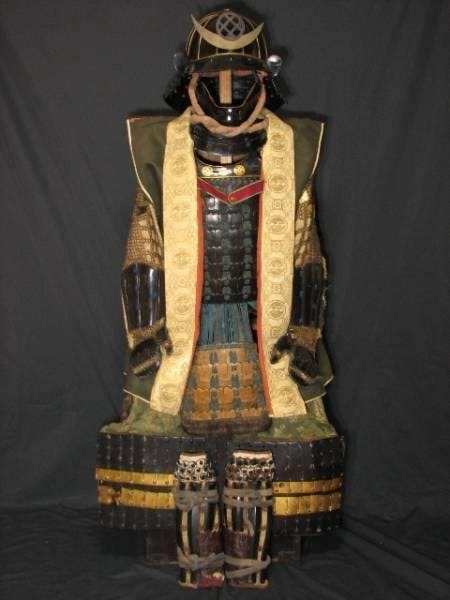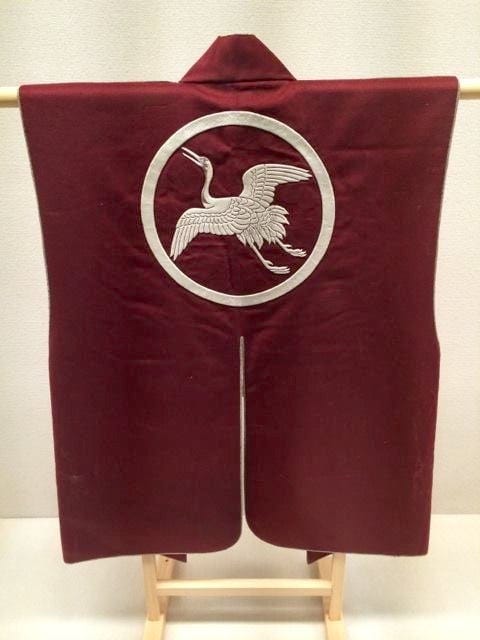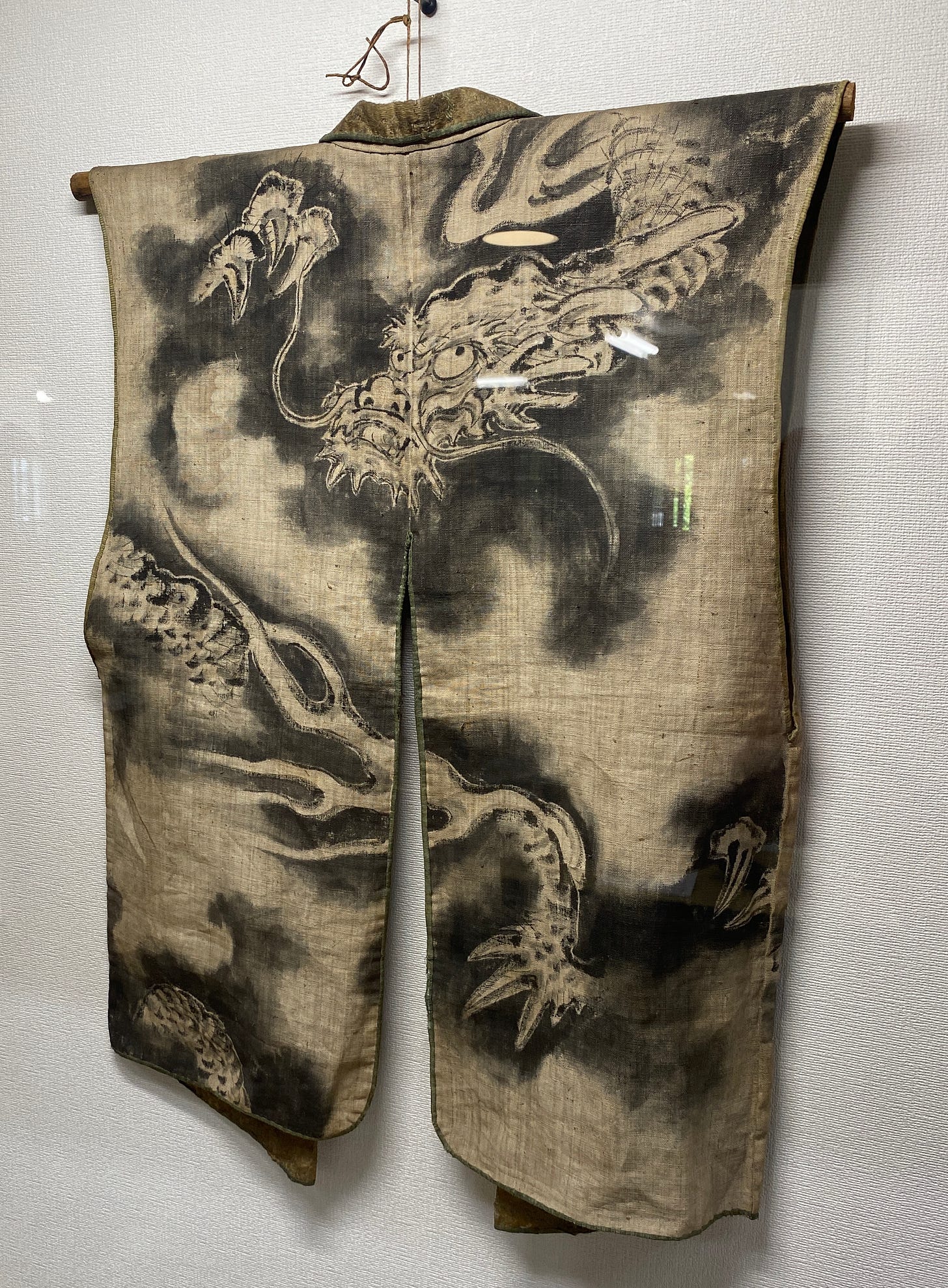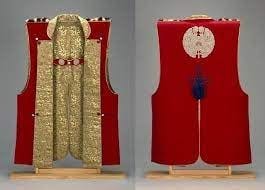Jinbaori, 陣羽織 (literally, war camp wear) or surcoats were worn from the late 16th century onwards by samurai over their armour, and occasionally over kimono and hakama. Made from felt, wool, thick hemp cotton, silk, even leather and often with a different coloured inner and decorated with colourful embroidery or fancy cloth-work around the collar, jinbaori often sported the clan crest on the back, and rarely on the front.
Jinbaori were most often sleeveless, but occasionally featured wide, short sleeves. The colourful, fancy styles of these jinbaori allowed a warrior to express his individuality on the battlefield. Originally a purely functional garment to keep the wearer and his armour dry, and prevent scratching the armour, jinbaori developed into a symbol of personal taste and power, with expensive, exotic textiles and unusual materials being used in the construction and design.
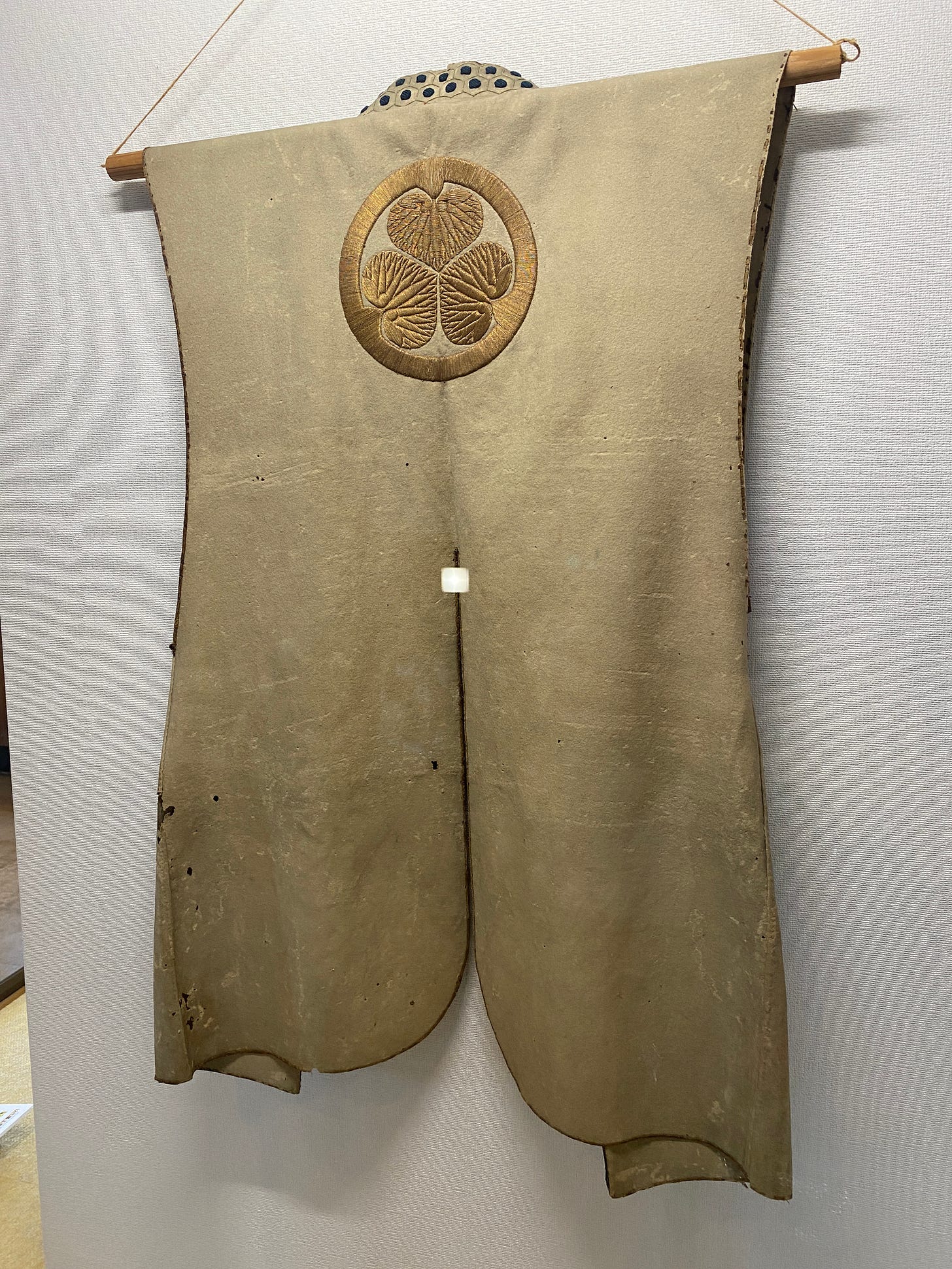
Late Edo period and early Meiji period jinbaori featured strips of cloth covered bamboo along the upper shoulder ridges, supposedly to have acted as protection against swords, when in fact the additions were simply stylized pieces copied from the epaulettes of the foreign visitors' military dress.
A jinbaori worn by the Taiko, Toyotomi Hideyoshi was actually made from a Persian rug and features lions, peacocks and other animals rare to Japan and woven with golden, silver and colored threads. It is believed to have been brought to Japan by Portuguese traders, before being cut up and made into a jinbaori.
The recent restoration work on this item took over 2 years to complete, and is designated an Important Cultural Property.
An interesting antique scroll (pictured below) shows how certain samurai captains or commanders of a unit or force wore jinbaori to match the battle standards being flown, and in the case of the red and black flags, matching aijirushi, identification tags were also worn.
Samurai History & Culture Japan is a reader-supported publication. To receive new posts, access the archives and support the work, please consider becoming a paid subscriber




